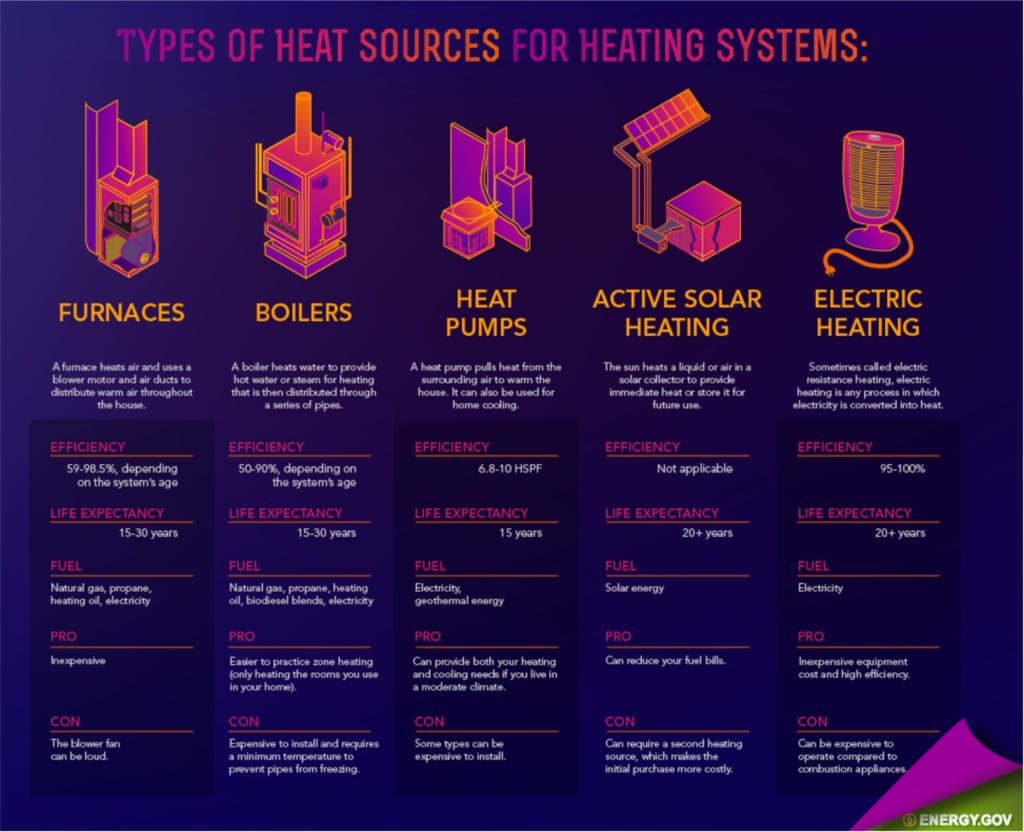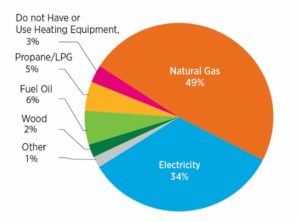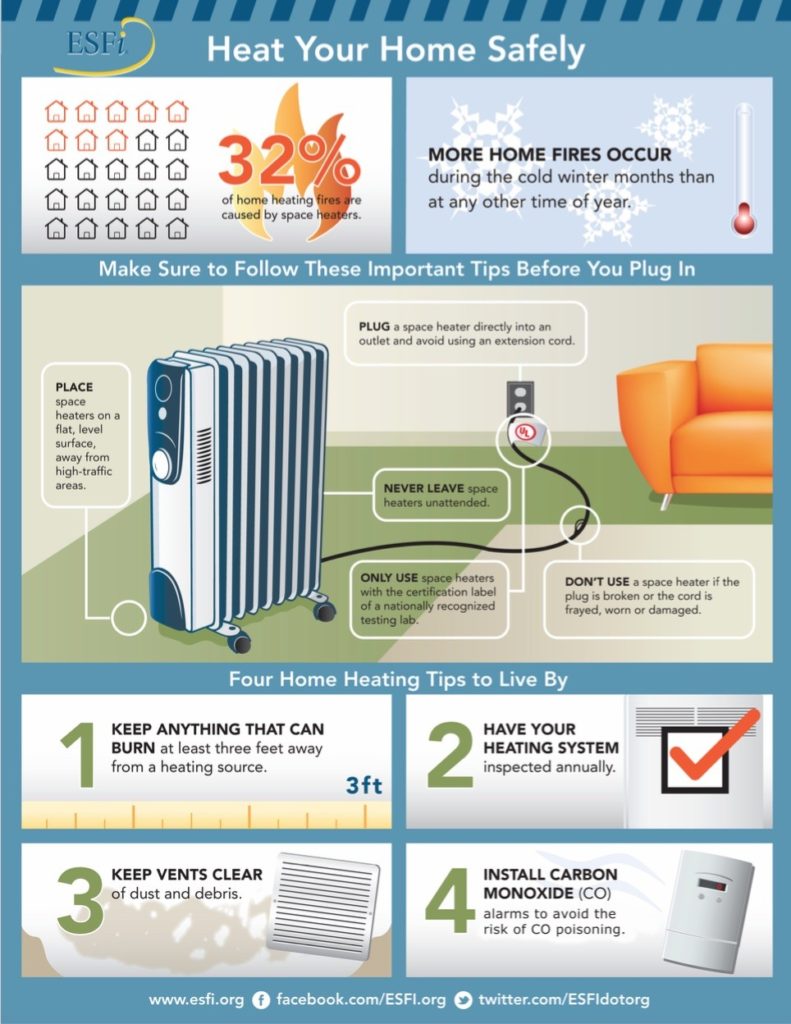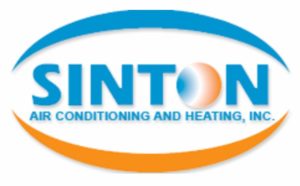Types of Heating Systems

Central Heat

Furnaces
The vast majority of North American families depend on a furnace that is central to offer heat. By blowing air that provides the air registers or grills A furnace works. This sort of heating system is referred to as forced distribution system or a. It may be powered by electricity, natural gas, or fuel oil.The furnace is not your only option to heat with today. There are many types of heating systems to choose from here. Take a look below.
With air, the gas is mixed within a gas – or oil-fired furnace and burned. A metal heat exchanger heats in which the heat is transferred to the atmosphere. Air is pushed through the heat exchanger from the “air handler’s” furnace fan and then forced through the ductwork downstream of the heat exchanger. From the building, combustion products are vented in the furnace by means of a pipe. Older “atmospheric” furnaces vented directly to the air and wasted about 30 percent of the fuel energy simply to maintain the exhaust warm enough to securely grow through the chimney. Present minimum-efficiency furnaces reduce this waste considerably by employing an “inducer” fan to pull the exhaust gases through the heat exchanger and cause draft in the chimney. “Condensing” furnaces are designed to recover much of the escaping heat by cooling exhaust gases well below 140°F, where water vapor in the exhaust condenses to water. This is the principal quality of a high-efficiency furnace (or boiler). These vent through a sidewall with a pipe.
New furnace criteria are now under development by the U.S. Department of Energy and are expected to be finalized in the spring of 2016. The furnace standards haven’t been updated since 1987.
A system controls when the components of the heating system turn off and on regulate. The control from the perspective is the thermostat, which turns the machine — or at least the supply system — off and on to keep you comfy. A typical air system will have a thermostat. However, there are other internal controls at a heating system, such as “high limit” switches which are part of an invisible but crucial set of security controls.
The best gas furnaces and boilers now have efficiencies over 90 percent
The efficacy of a fossil-fuel furnace or boiler is a measure of the amount of useful heat generated per unit of input energy (fuel). Combustion efficiency is the measure; whenever it’s running, it’s only the efficiency of the system. Combustion efficiency is similar to the miles your car gets cruising along on the highway at 55 mph.
In the U.S., furnace efficiency is governed by minimum AFUE (Annual Fuel Utilization Efficiency). AFUE quotes averaging summit efficiency and situations. AFUE accounts for cool-down, startup, and operating losses which occur in operating conditions, and includes an estimate of electricity and controllers. AFUE is including traffic and both highway driving, like your automobile mileage between fill-ups. The higher the AFUE.
Boilers
Boilers are water heaters that are special-purpose. While furnaces carry heat in the air, boiler systems disperse the heat in warm water, which gives up the heat as it moves through other devices or radiators in rooms throughout the home. The water that is cooler returns to the boiler. Water systems are called systems. Residential boilers use heating oil or natural gas for fuel.
In steam boilers, which are not as common in homes these days, the water is boiled and steam carries heat condensing as it warms to water in the radiators. Gas and oil are used.
Rather than a duct and fan system, a boiler uses a pump to circulate water. Some hot water systems circulate water through plastic tubing in the floor, a system called radiant floor heating (see “State of the Art Heating”). Boiler controllers include valves which regulate water and flow temperature, aquastats, and thermostats. Even though the cost isn’t trivial, it’s generally a lot easier to set up “zone” thermostats and controls for individual rooms with a hydronic system than with forced air. Some controllers are standard features in new boilers, while others may be added on to conserve energy (see the “Modifications by Heating System Builders” segment on the heating maintenance page).
Much like furnaces, condensing gas-fired boilers are relatively common, and much more effective than non-condensing boilers (unless quite sophisticated controls are used). Oil-fired condensing boilers are rare in the U.S. for many reasons associated with reduced latent heat possible, and potential for greater fouling with conventional fuel oil.
Heat Pumps
Heat pumps are merely two-way air conditioners (see detailed description in the cooling systems segment). By moving heat from the inside to the outside throughout the summer, an air conditioner operates. In the winter, this trick is reversed by the heat pump, discharging that warmth in the home, and scavenging warmth from the outdoors with the support of an electric system. All heat pumps utilize air to move .
A ground-source heat pump heats and cools in almost any climate by exchanging heat with the floor, which has a more constant temperature.
There are two kinds of heat pumps. Heat pumps use the air as the heat source in winter and heat sink in summer. Ground-source (also known as geothermal, GeoExchange, or GX) heat pumps get their heat from underground, where temperatures are more constant yearlong. Heat pumps are a lot more common since they’re easier to install and cheaper. Ground-source heat pumps, have a desire, and are chosen by consumers who intend to remain in the house for quite a long time, or however, are more efficient. The way to ascertain whether a heat pump is logical on your climate is discussed further under “Fuel choices.”
Whereas an air-source heat pump is set up much like a central air conditioner, ground-source heat pumps require that a “loop” be buried in the ground, usually in long, shallow (3–6′ deep) trenches or at one or more vertical boreholes. The method will be based on the experience of the subsoil, the dimensions of your lot, the installer, as well as the landscape. Alternatively, rather than using a refrigerant some systems draw in groundwater and pass it. The groundwater is returned to the aquifer.
The heat pump can deliver more energy than it absorbs since electricity in a heat pump is used to move heat rather than to create it. The ratio of delivered heating energy to absorb energy is known as the coefficient of performance, or COP, with average values ranging from 1.5 to 3.5. This is a “steady-state” step and not directly comparable to the heating season performance factor (HSPF), a seasonal step mandated for evaluation the heating efficiency of air-source heat pumps. Units are more efficient than air-source heat pumps, although converting between the measures isn’t simple.
Direct Heat

Gas-Fired Space Heaters
In some regions, direct heating equipment that is gas-fired is a favorite. Including free-standing, wall-mounted, and floor furnaces, all characterized by their lack of ductwork and heat output that was small. They are useful for heating a room since they lack ducts. Either the doorways between rooms must be left open if heating rooms is required or another heating technique is essential. Better versions use “sealed combustion air” systems, with pipes installed through the wall to both supply combustion air and take off the combustion products. Performance can be provided by these components for other buildings and cottages. The versions can be fired with propane or natural gas, and a few burn kerosene.
Unvented Gas-Fired Heaters: A Bad Idea
Gas or kerosene space heaters which don’t have an exhaust port have been sold for decades, but we strongly discourage their use for health and security reasons. Known as “vent-free” gas heating appliances by producers, they comprise wall-mounted and free-standing heaters in addition to open-flame gas fireplaces with ceramic logs which aren’t really attached to a chimney. Manufacturers claim that since the goods’ combustion efficiency is high, they are for building occupants secure. This claim is only valid if you maintain a window available for fresh air. Dangers include exposure to combustion by-products, as mentioned in Heating, and oxygen depletion (these heaters must be equipped with oxygen depletion sensors). Due to these dangers, at least five states (California, Minnesota, Massachusetts, Montana, and Alaska) prohibit their use in houses, and lots of cities in the USA and Canada have banned them too.
Electric Space Heaters
Portable (plug-in) electrical heaters are inexpensive to get, but expensive to use. These resistive heaters include “oil-filled” and “quartz-infrared” heaters. They convert electrical current from the wall socket directly like a clothing or toaster iron. As explained further under “Selecting a New System,” it requires plenty of electricity to supply the identical amount of useful heat that natural gas or oil can offer onsite. A 1,500- watt plug-in heater will use nearly the whole capacity of a 15-amp branch circuit; hence, adding more load will trip the circuit breaker or blow the fuse. The cost to run a 1,500-watt unit for an hour is straightforward to calculate: it’s 1.5 times your energy cost in cents per kilowatt-hour. At rates that are national that heater would cost 18cents per hour cost more — and to operate. On the other hand, for intermittent use, it’s the “least-bad” alternative when alternatives would require important investments to enhance ductwork for a particular area, for instance. Keep in mind, electrical resistance heat is the kind of heat, and it is, therefore advised.
“Electric baseboard heat” is still another sort of resistive heating, much like a plug-in space heater except that it’s hard-wired. It’s two virtues: the setup cost is low, and it’s not difficult so that you can turn down the heat to install room thermostats. Running costs, as for all resistive systems, are usually quite high unless the home is “super-insulated.”
Wood-Burning and Pellet Stoves
If you like stoking the stove or furnace and piling timber Wood heating can earn a lot of sense. Wood prices are lower than oil, gasoline, or electricity. The savings could be large, should you cut your own wood. Pollutants from wood burning are a problem in certain areas of the nation, causing the U.S. Environmental Protection Agency (EPA) to implement regulations which govern pollution emissions from wood stoves. Because of this, new models are. Stoves offer lots of advantages over wood stoves. They are less polluting than provide users greater convenience, temperature control and wood stoves, and indoor air quality.
Fireplaces
Gas (and many wood) fireplaces are essentially a part of a room’s décor, offering a warm glow (and a way to eliminate key files), but typically not an effective heat source. With installations that rely on air drawn to the fireplace for dilution and combustion out of the space, the fireplace will lose more heat than it provides, because so much air is drawn through the device and have to be replaced by air that is cold. On the other hand, if the fireplace is given with a supply of air a glass door, and a chimney damper, it may provide heat.
State of the Art Radiant Heating
Radiant floor heat generally refers to systems that circulate warm water in tubes under the floor. The ground, which then warms people using the space is warmed by this. It considered effective by its advocates is controllable, and is costly to set up. Additionally, it needs a very skilled system designer and installer, and restricts carpet choices and other floor finishes: you do not wish to “blanket” your heating source.
Contact the Radiant Panel Association
Ductless, Mini-Split, Multi-Split. Residential ductwork is rare outside North America. “Ductless” heat pumps, which disperse energy through refrigerant lines rather than air or water, are widely used. Field trials in the Pacific Northwest suggest that they be where replacing electrical resistance heating, and could have cold weather performance. Like systems immaturity of the market helps guarantee that whole-house systems that are multi-split carry premium rates.
Combined heat and power (CHP) or cogeneration for homes has been seriously studied in a few countries. The basic premise is to utilize a little generator to meet a few of the electrical demand of the home and recover the waste heat (typically greater than 70 percent of the heating value of the gas) to heat the home (hydronic or water-to-air systems) and also make domestic hot water. These systems aren’t yet available. They are likely to have the best economics in homes with heating bills that are high since the house can’t be insulated, such as stone or brick houses.

Related Articles;

